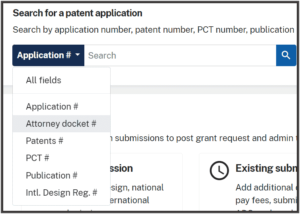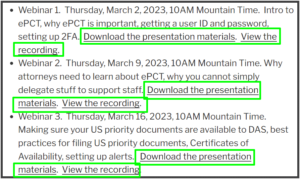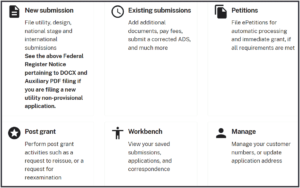
In a previous blog article I discussed the front-page attorney docket number search in Patentcenter. I pointed out that in the legacy system (PAIR) it was possible to check a box to enter a partial docket number to get one or more matches. In that previous blog article I noted the conspicuous absence of a corresponding check box in Patentcenter’s front-page attorney docket number search. I am indebted to alert reader Marc V Richards for somehow figuring out that there is an undocumented feature that sort of makes up for the absence of that check box. It turns out that you can do wildcard searches. Continue reading “front-page attorney docket search in Patentcenter has an undocumented feature”




